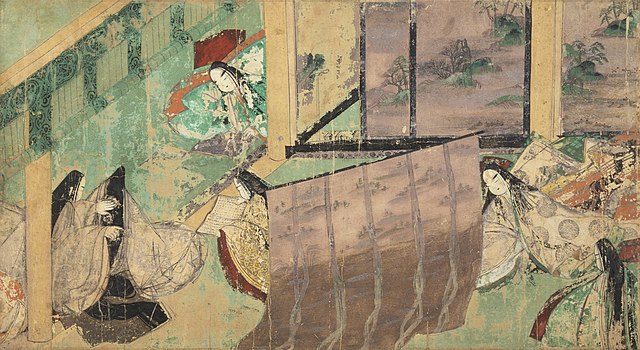Shibata Zeshin was a Japanese lacquer painter and print artist of the late Edo period and early Meiji era. He has been called "Japan's greatest lacquerer", but his reputation as painter and print artist is more complex: In Japan, he is known as both too modern, a panderer to the Westernization movement, and also an overly conservative traditionalist who did nothing to stand out from his contemporaries. Despite holding this complicated reputation in Japan, Zeshin has come to be well regarded and much studied among the art world of the West, in Britain and the United States in particular.
Maki-e Fuji Tagonoura, 1872
"Waves" maki-e panel, 1888-1890, the Khalili Collection of Japanese Art
Crows Fly by Red Sky at Sunset, woodblock print, ca. 1880 (Brooklyn Museum)
Autumn Grasses in Moonlight, ink, lacquer, and silver leaf on paper, 1872–91 (Metropolitan Museum of Art)
Japanese painting is one of the oldest and most highly refined of the Japanese visual arts, encompassing a wide variety of genres and styles. As with the history of Japanese arts in general, the long history of Japanese painting exhibits synthesis and competition between native Japanese aesthetics and the adaptation of imported ideas, mainly from Chinese painting, which was especially influential at a number of points; significant Western influence only comes from the 19th century onwards, beginning at the same time as Japanese art was influencing that of the West.
Set of sliding doors of Frolicking Birds in Plum and Willow Trees by Kanō Sansetsu, 1631, Important Cultural Property
Mural painting from the Takamatsuzuka Tomb. National Treasure.
Panel from The Tale of Genji handscroll (detail). National Treasure.
Siege of Sanjō Palace








